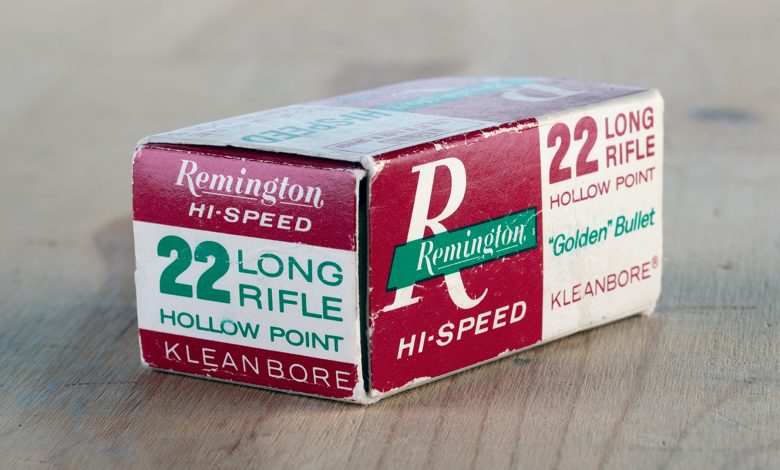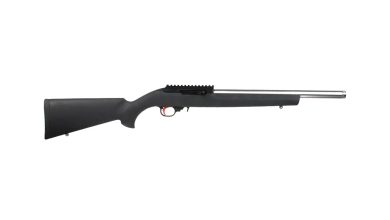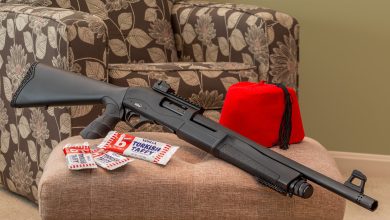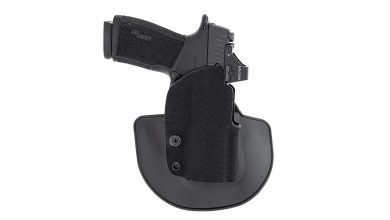Tech Wisdom: Ancient Ammo

Should you find yourself dealing with old ammo or that of unknown origin, be sure to inspect it prior to attempting to fire it in your gun.
I purchased a GSG Firefly .22 LR pistol a while ago and finally got to the range to try it out.
Overall, I am pleased with the pistol, but I did experience one issue during that outing to the range: The owner’s manual specifies the use of high-velocity ammo, of which I have a few bricks on hand that are 20 or more years old. The ammo, for the most part, functioned well. I did have a few misfires, but even those rounds did fire upon restrike.
As I was ending my range session, I picked up the empty pieces of brass and noticed the majority were split from the rim halfway up the casings. Unfortunately, I did not think to take a photo. Could this be due to the age of the ammunition?
I am assuming it might be unsafe to continue using this ammo in this particular firearm. I certainly would not want to cause any damage by continuing to use it.
In your opinion, would my Ruger New Model Super Single-Six (stainless steel, 5.5-inch barrel from the 1970s) be sturdy enough so I could use up this ammo?
Any information and/or advice you could provide would be very much appreciated.
Mark Hover, Duluth, GA
There are several parts to your question regarding the ammunition that you are using.
The first part addresses the need to strike the cartridge a second time to realize ignition. In this, there are two things to consider:
The pistol you have is a high-quality firearm that is known to have a match-style chamber, which is slightly tighter in dimension than standard .22 LR chambers. What this means is that some types of non-match ammunition will not fully seat in the chamber consistently. If that is the case in your pistol, the first blow of the hammer finishes seating the cartridge in the chamber and the second hit ignites the cartridge. This could also be a result of a dirty chamber in semi-automatic pistols of any brand. The intermittent split cases more than likely contributed to leaving a higher degree of fouling in the chamber, as well causing irregular seating of the cartridges during the cycle of operation.
For this reason, I recommend discontinuing the use of this ammunition in your semi-auto pistol unless you enjoy clearing stoppages with a high degree of regularity.
Your description of the ammunition’s age and the split in the sidewall of the case suggests the likely culprit is how the ammo was stored. Ammonia will attack the brass that the cartridge case is made of and cause the phenomenon you are experiencing. Even vapors from household cleaners or gun-cleaning solvents containing ammonia can have the effect that you are describing with your ammunition. This is one of the many reasons that sealed containers—ensuring there will be no contact with moisture or the atmosphere—are recommended for long-term storage of ammunition.
The Ruger Single-Six is at the top of the class regarding dependability, reliability and quality in the field of .22 rimfire handguns. Further, the robust nature of this single-action revolver enables the revolver to handle all types of .22 LR ammunition as well as all types of .22 Mag. (provided you have a .22 Mag. cylinder) ammo with equal ease.
The fact that the cases are not split at the rim or at the mouth means the gases used to propel the projectile down the barrel are sealed in the chamber during the combustion of the cartridge. Therefore, since no gas is escaping other than down the bore and the revolver is not dependent on the cartridge to operate the action as it is in the semi-auto handgun, there is little reason not to fire the ancient ammunition in your Ruger revolver.
Nonetheless, do not expect the epitome of accuracy due to the inconsistency of the ammunition, but it should do just fine for target practice.
Read the full article here







